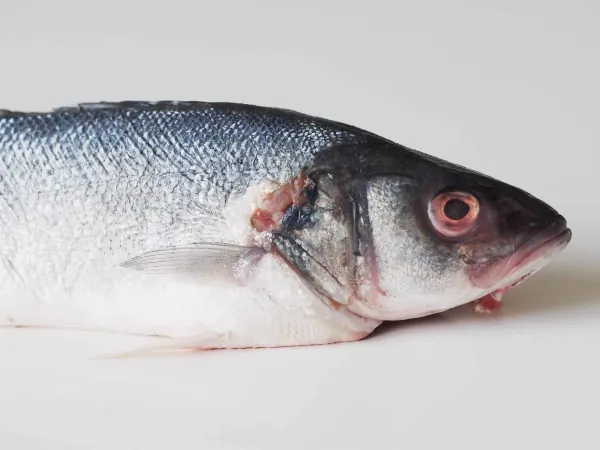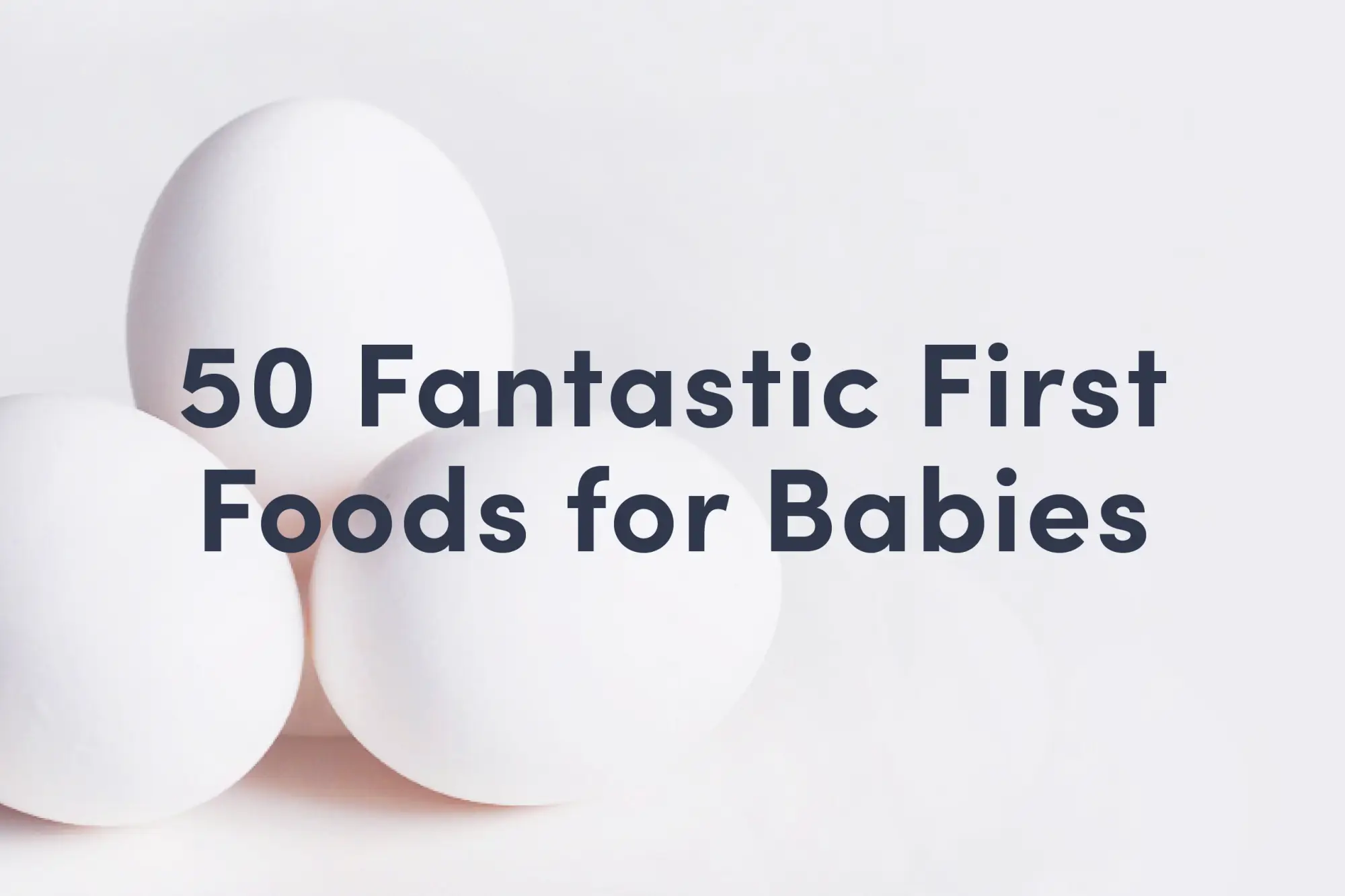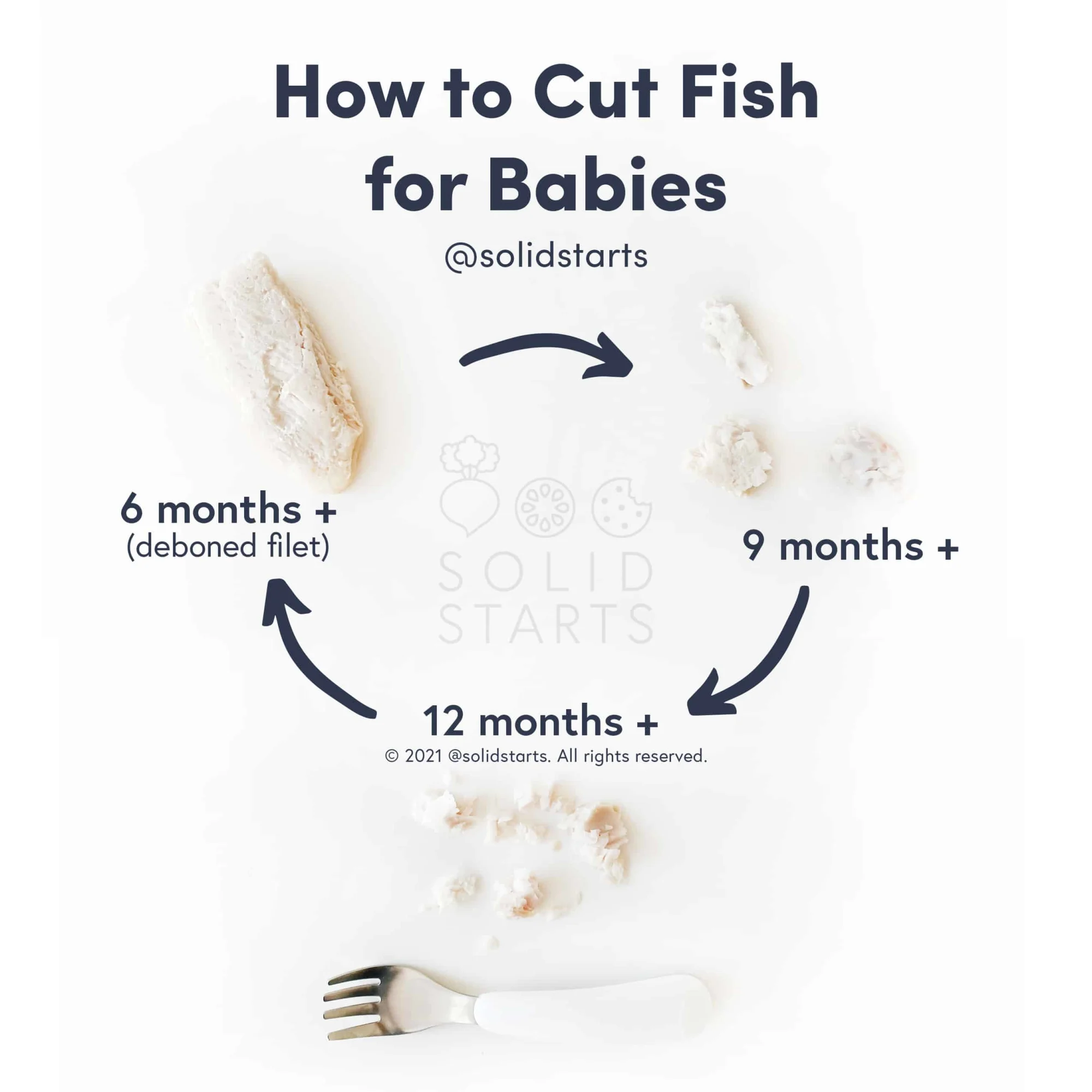Branzino
Fish (Finned)
Age Suggestion
6 months
Iron-Rich
No
Common Allergen
Yes

When can babies have branzino?
Branzino may be introduced as soon as baby is ready to start solids, which is generally around 6 months old. Farmed branzino may be offered a couple of times a week, whereas wild branzino is best consumed once a month or less due to its elevated levels of mercury.
This popular white fish is also known as Mediterranean sea bass, European sea bass, and Loup de Mer, among other names. The fish’s size and mild, flaky flesh have long made it a popular choice in dishes that feature the whole fish, like roasted branzino with tangy citrus and rich butter.
Is branzino healthy for babies?
Yes. Farmed branzino is typically low in mercury and rich in protein, in addition to a number of micronutrients like potassium, selenium, and vitamins B6 and B12. Plus, it is rich in omega-3 fatty acids. Together, these nutrients provide the building blocks of growth and development, electrolyte balance, hormonal function, metabolism, and healthy red blood cells.
Opt for farmed branzino over wild-caught, as wild branzino can contain significant amounts of mercury. Mercury is a persistent and progressive toxin to which babies are particularly susceptible. Thankfully there are lots of fish low in mercury that babies can enjoy. Furthermore, fish offers nutrients that are particularly important for babies (such as vitamin D and selenium) that can be hard to find in other foods. To minimize exposure to mercury from fish, simply focus on those fish that are lowest in mercury and limit the amount and frequency of fish that have higher amounts of mercury. More on this topic in our guide, Best & Worst Fish for Babies.
Is branzino a common allergen?
Yes. Finned fish are classified as a Global Priority Allergen by the World Health Organization. It’s estimated that only 0.2 percent of people are allergic to finned fish worldwide, and the prevalence of fish allergies in children, while variable, is even less than in adults. About 40% percent of people with finned fish allergies don’t experience their first allergic reaction until adulthood. Unfortunately, most individuals who are allergic to finned fish do not outgrow the allergy.
Some individuals with finned fish allergy may react from inhaling proteins that become aerosolized when cooking fish. If this is the case for baby, you may wish to avoid cooking fish in the household when baby is present.
Around 50% of individuals with one finned fish allergy will react to another fish as well. This is because the major allergen in finned fish, beta-parvalbumin, is present in most fish, regardless of species. Due to cross-contamination and mislabeling of fish, allergists often recommend that those who are allergic to one species of finned fish should avoid all finned fish until meeting with an allergist to determine which fish might be safely introduced into the diet. This is an individualized recommendation, so be sure to confirm with your allergist before offering other finned fish if baby is allergic to branzino.
Finned fish are a known trigger of food protein-induced enterocolitis syndrome, also known as FPIES. FPIES is a delayed allergy to food protein which causes the sudden onset of repetitive vomiting and diarrhea to begin a few hours after ingestion. Left untreated, the reaction can result in significant dehydration. Unlike other food allergens, FPIES to finned fish may not present until later in life, and tends to be life-long.
Lastly, a note on scombroid poisoning, which is sometimes mistaken for a fish allergy. Scombroid poisoning is a type of food poisoning that occurs when someone eats fish that has been improperly refrigerated. This allows a large amount of histamine to build up in the fish. When consumed, this large load of histamine can cause symptoms that mimic those of an allergic reaction, causing some people to believe that they have developed a finned fish allergy, even if they are not allergic. Ensuring that fish has been stored at adequately cool temperatures can minimize the risk of such a reaction.
If you suspect baby may be allergic to fish, consult an allergist before introducing branzino. As with all common allergens, introduce branzino in small amounts at first and watch closely as baby eats to see if any adverse reaction occurs. If all goes well, gradually increase the serving size over time. Once common food allergens are successfully introduced, it is recommended to keep them in the diet regularly (twice weekly, if possible). However, this doesn’t mean that each different fish species must be offered multiple times a week. Finned fish share the same major proteins, so it is perfectly acceptable to rotate finned fish varieties according to availability and preference.
Is branzino a choking hazard for babies?
No. Branzino presents a low risk of choking, as long as all bones are removed before serving. As always, make sure you create a safe eating environment and stay within an arm’s reach of the child during meals. For more information on choking, visit our section on gagging and choking and familiarize yourself with the list of common choking hazards.
Learn the signs of choking and gagging and more about choking first aid in our free guides, Infant Rescue and Toddler Rescue.
Videos
How do you serve branzino to babies?
Every baby develops on their own timeline, and the suggestions on how to cut or prepare particular foods are generalizations for a broad audience.
6 months old +:
Cut pieces of cooked branzino (skin and bones removed) into strips about the width and length of two adult pinky fingers pressed together. Serve as finger food plain or with a sauce, as desired. Keep in mind that baby will likely smush the fish in their hand—this is okay. You can also mix cooked branzino into mashed vegetables or plain yogurt and let baby self-feed. Alternatively, pre-load a spoon or age-appropriate fork with the mash and let baby try to pick it up or grab it from you. At this age, you can also offer fish cakes made from branzino, as long as they are soft and larger than baby’s mouth.
9 months old +:
Offer bite-sized pieces of cooked branzino, skin and bones removed, for baby to try and pick up with their developing pincer grasp (where the thumb and forefinger meet). Alternatively, serve cooked branzino in the form of larger strips (about the width and length of two adult pinky fingers pressed together) or fish cakes for biting and tearing practice.
12 months old +:
Serve the cooked, deboned fish in longer strips, bite-sized pieces, cakes and patties, or flaked on its own or mixed into other foods. This is a great age to work on utensil practice with foods like branzino.
Avoid purchasing prepared or processed fish cakes or fish sticks. Most are too high in sodium for your little one and fish cakes are relatively easy to make from scratch.
For more information on how to cut food for babies, visit our page on Food Sizes & Shapes.
Written by
Expert Tips Delivered to Your Inbox
Sign up for weekly tips, recipes and more!
The content offered on SolidStarts.com is for informational purposes only. Solidstarts is not engaged in rendering professional advice, whether medical or otherwise, to individual users or their children or families. No content on this site, regardless of date, should ever be used as a substitute for direct medical advice from your doctor or your medical or health professional, nutritionist, or expert in pediatric feeding and eating. By accessing the content on SolidStarts.com, you acknowledge and agree that you are accepting the responsibility for your child’s health and well-being. In return for providing you with an array of content “baby-led weaning” information, you waive any claims that you or your child may have as a result of utilizing the content on SolidStarts.com.








